Claims Adjudication
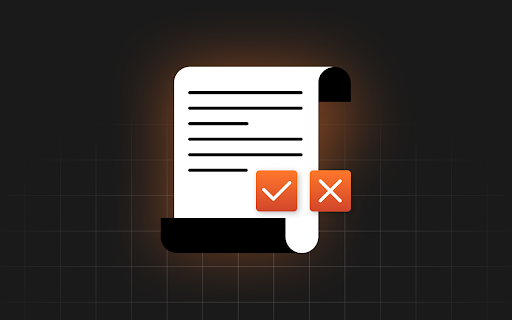
Sample Claims Adjudication Workflow
Claims adjudicators follow a structured but complex set of tasks when processing a new claim.
From the First Notice of Loss (FNOL) to final settlement, each step demands speed, precision, and judgment.
The diagram below outlines a representative workflow used across major insurance carriers. It includes:
- Intake and triage
- Investigation and diligence
- Decision-making
- Settlement and closure

This is a representative workflow. Our agentic AI can adapt to your team’s specific systems, workflows, and priorities.
Each of these steps can be augmented, not replaced, by AI agents inside AgentFlow. Here’s how.
Augmenting Claims Adjudication With AgentFlow
1. Claims Intake and Triage
Before AgentFlow: Adjudicators manually extract information from emails, PDFs, and portal submissions. They sift through FNOL packets to classify the claim, validate coverage, and initiate case setup.
With AgentFlow: Document AI classifies incoming documents and extracts key data (policy number, incident date, claimant info) with zero bounding box annotations. Decision AI initiates the next steps based on structured business rules, such as flagging incomplete packets or initiating third-party follow-ups.

Value: Faster intake with fewer errors. Adjudicators receive a structured case file with verified data, allowing them to begin real work immediately.
2. Investigation and Diligence
Before AgentFlow: Adjudicators must reach out to policyholders, request missing documentation, cross-reference internal systems, and validate incident details. This can mean toggling between databases, claim notes, emails, and customer call transcripts.
With AgentFlow: Conversational AI handles common claimant interactions (e.g., missing documents, eligibility questions). Database AI retrieves structured data (policy history, prior claims, external verifications). Decision AI guides the investigation by applying business rules to assess completeness and initiate follow-ups.
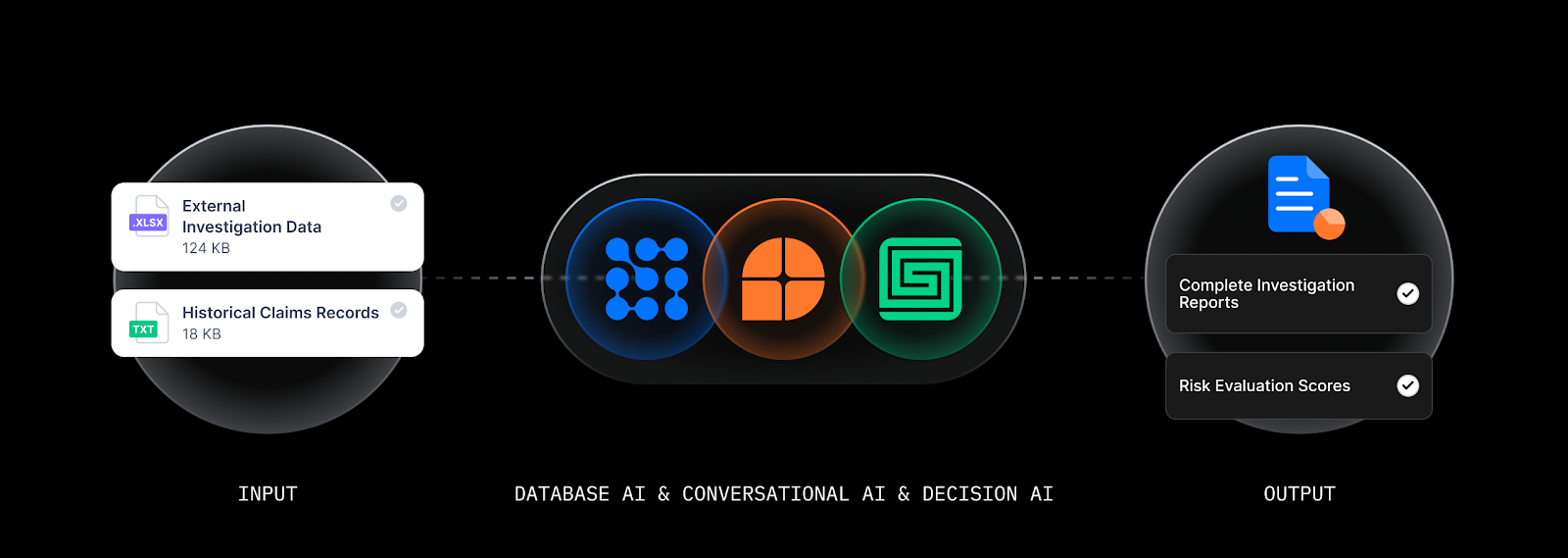
Value: Accelerated diligence. Agents surface relevant data without toggling systems. Adjudicators spend more time reviewing and less time searching.
3. Decision
Before AgentFlow: Decision-making requires a judgment call based on a mix of structured and unstructured evidence. Adjudicators analyze documentation, apply coverage criteria, and interpret prior decisions manually.
With AgentFlow: Decision AI applies institutional guidelines and historical precedent to propose an outcome: approval, denial, or escalation. Confidence scores and audit trails make the process transparent and traceable.
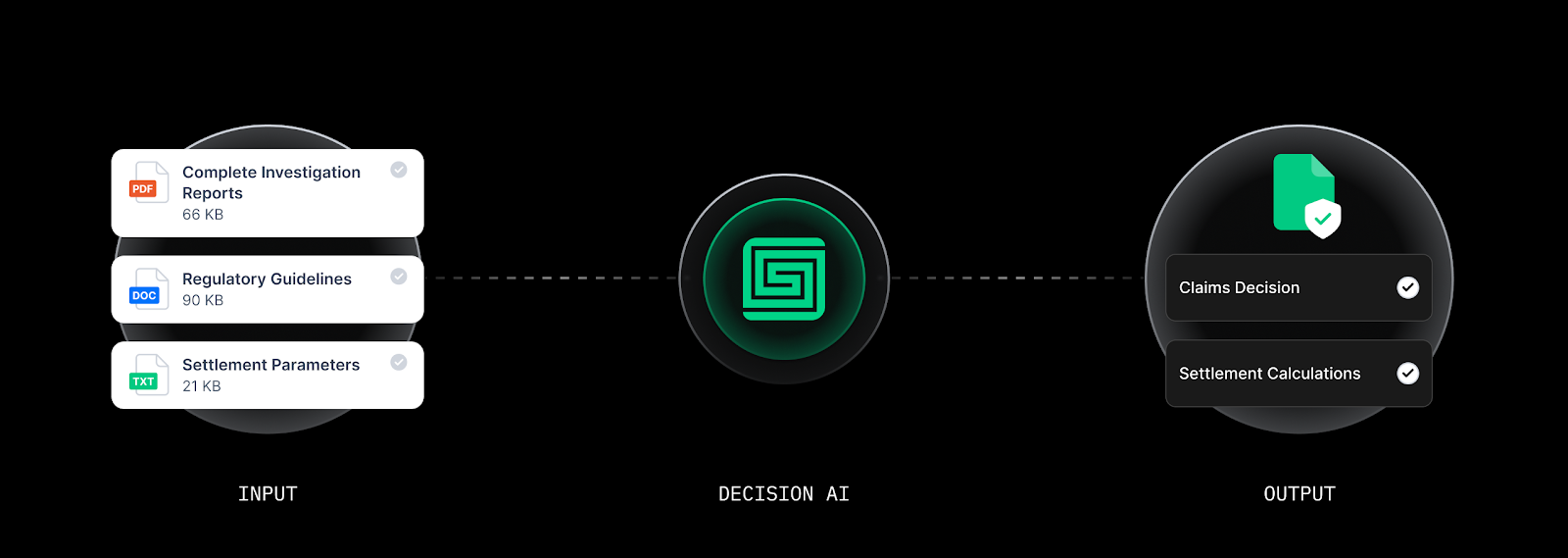
Value: Faster, more consistent decisions. Complex cases escalate automatically. Adjudicators gain a second set of eyes grounded in organizational knowledge.
4. Settlement and Closure
Before AgentFlow: Adjudicators draft settlement letters, close case files, and trigger payments manually. Each of these tasks takes time and introduces the potential for clerical error.
With AgentFlow: Report AI generates compliant, structured closure documentation. It pulls in all final decisions, embeds traceable logic, and ensures consistency across case records.
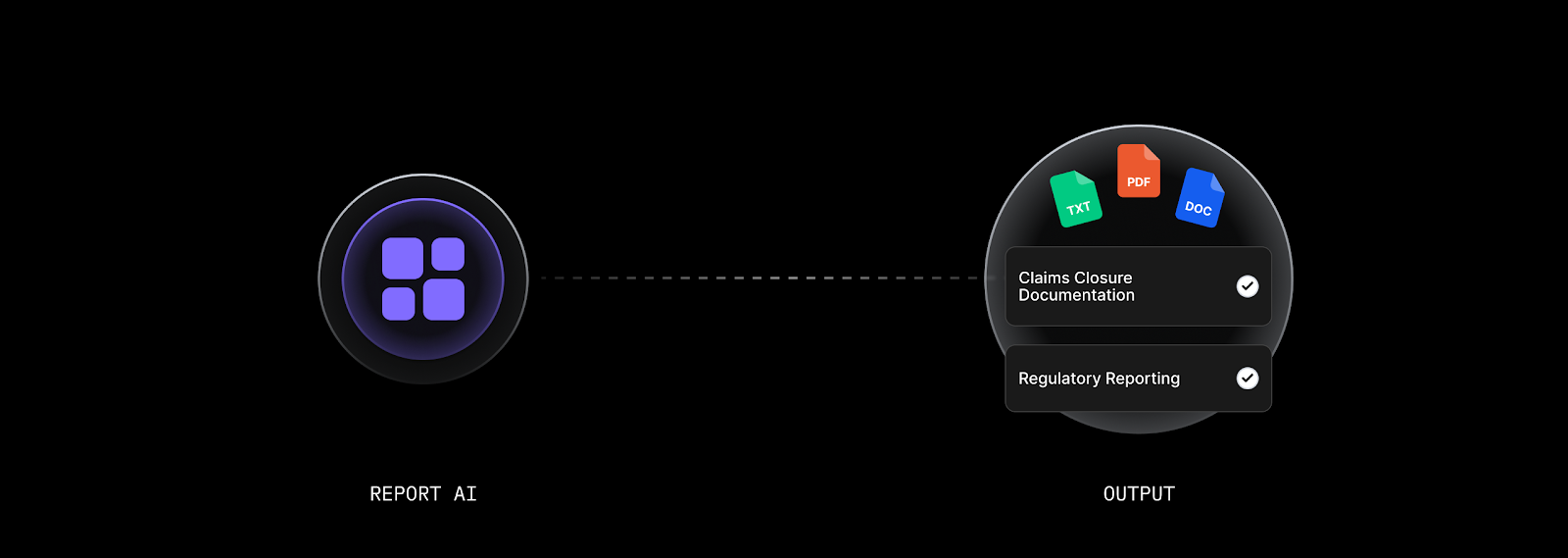
Value: Clean case closure with less effort. Documents are audit-ready. Adjudicators can focus on high-touch cases instead of drafting boilerplate content.
How AgentFlow Ensures Security, Governance, and Trust in Claims Adjudication
AgentFlow is designed for the regulatory realities of insurance.
It protects your data, ensures transparency, and earns the trust of both auditors and end-users.
Here's how:
- Data never leaves your control: AgentFlow is deployed within your own infrastructure: either in your cloud environment or on-premise, so your data stays secure and sovereign.
- Encryption and access security: All data is encrypted using AES-256 (at rest) and TLS 1.3 (in transit). Access is tightly controlled with secure logins, role-based permissions, and VPN requirements, reducing the risk of unauthorized access.
- Compliance by design: AgentFlow is certified for standards like SOC 2 Type II and PCI DSS 4.0, and is actively being validated for ISO 27001. Regular third-party security tests ensure continued compliance.
- Clear audit trails: Every action taken by an AI agent is logged in human-readable JSON format, including inputs, outputs, timestamps, and the agent’s confidence level. This means auditors and compliance officers can trace decisions back to the exact data and logic used.
- Governance built-in: AgentFlow uses predefined thresholds to decide when an agent can act independently vs. when it should escalate to a human.
For example, if a claim confidence score is below 80%, it gets routed for manual review.
- Ongoing trust and monitoring: All models are monitored in real-time for drift and updated quarterly. This ensures they continue to reflect company policies, regulatory requirements, and operational best practices.

For end users, this means confidence that the system won’t act recklessly. Every action is explainable. Every process is governed. And every outcome is backed by policy and logic that your team understands and controls.
Ready to Adapt Agentic AI to Your Workflow?
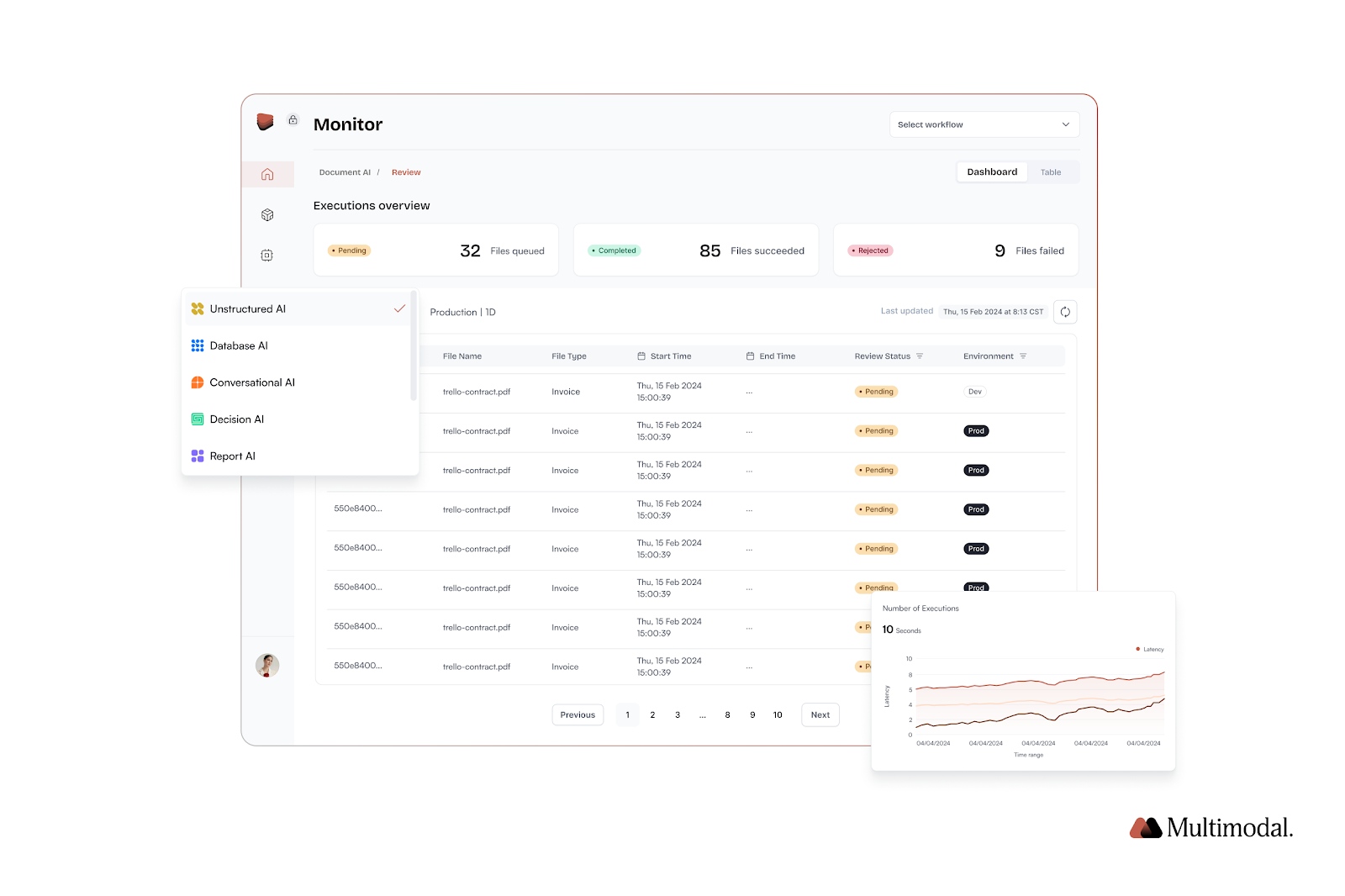
Every insurance organization has its own processes, escalation paths, and system integrations. AgentFlow adapts to that reality.
Whether you need to adjust document classifications, create new decision rules, or configure new integrations, every one of our agents is configurable.
Book a demo to see how AgentFlow can fit your adjudication workflow and turn your institutional knowledge into executable intelligence.
.svg)
.svg)